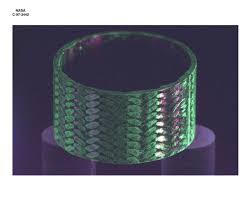Discover the significance of dye penetrant in NDT for precisely detecting surface defects in critical components. Uncover how it accurately detects flaws like cracks, porosity, and lapses early on. Understand its role in enhancing structural integrity through cost-effective evaluations without damaging materials. Realize its critical function in quality assurance by efficiently identifying potential flaws and reducing costs. Recognize its importance in safety standards for ensuring equipment reliability and preventing failures. Learn more about how dye penetrant testing plays a pivotal role in maintaining quality standards and safeguarding human lives.
Key Benefits of Dye Penetrant Testing
Dye penetrant testing offers significant advantages in detecting surface-breaking defects with high accuracy and sensitivity. This method is a cost-effective way to identify flaws that aren’t easily visible to the naked eye. By utilizing capillary action, the dye penetrant seeps into even the smallest imperfections, ensuring reliable detection of defects in various materials.
One key benefit of dye penetrant testing is its ability to thoroughly examine components without the need for expensive equipment or extensive training. This makes it a practical and cost-effective method for companies looking to maintain quality control in their manufacturing processes. Additionally, the results obtained from dye penetrant testing are highly reliable, allowing for prompt identification of any surface irregularities that could compromise the integrity of a part or structure.
Applications Across Industries
Exploring the diverse applications of dye penetrant testing reveals its indispensable role across various industries in ensuring quality control and structural integrity. In aerospace, dye penetrant testing is extensively used to detect surface-breaking defects in critical components such as turbine blades, landing gears, and engine parts. Automotive manufacturers rely on this method to inspect welds, castings, and forged components for imperfections that could compromise vehicle safety. Moreover, the oil and gas industry utilizes dye penetrant testing to assess the integrity of pipelines, pressure vessels, and offshore structures, ensuring operational safety and preventing costly leaks.
Across different industries, advancements in dye penetrant technology have led to the development of fluorescent penetrants, which enhance visibility and sensitivity during inspections, particularly in low-light conditions. These technological enhancements have revolutionized defect detection capabilities, allowing for more accurate and reliable results in a wide range of industry applications. Through continuous innovation and adaptation, dye penetrant testing remains a cornerstone in maintaining quality standards and structural soundness across diverse industrial sectors.
Ensuring Structural Integrity
To ensure the structural integrity of components, thorough dye penetrant testing must be conducted to detect any surface defects that could compromise the overall quality and safety of the structure.
By ensuring reliability through this meticulous testing process, you can trust that potential flaws, such as cracks, porosity, or laps, are identified early on. Detecting flaws at the surface level is crucial as it can prevent catastrophic failures that may occur due to undetected defects.
The dye penetrant method allows for the inspection of various materials, including metals, plastics, and ceramics, making it a versatile technique for assessing structural integrity across different industries. It provides a cost-effective solution for evaluating components without causing damage to the tested parts, thus contributing to the longevity and safety of the structures.
Emphasizing the importance of this testing method in ensuring the reliability of structures underscores the significance of preventive measures in maintaining the overall quality of engineering components.
Role in Quality Assurance
Detecting surface defects through thorough dye penetrant testing plays a critical role in ensuring the quality assurance of engineering components by identifying potential flaws that could compromise structural integrity. By conducting dye penetrant inspections, you enhance the efficiency of your quality control processes. This method allows for the detection of minuscule defects that might go unnoticed by the naked eye, leading to improved product quality and reliability.
Moreover, incorporating dye penetrant testing into your quality assurance protocols can result in significant cost reductions. By identifying defects early in the manufacturing process, you can address issues promptly, preventing further complications that could escalate production costs. This proactive approach not only saves money by reducing the need for extensive rework but also contributes to overall efficiency improvement within your operations.
Importance in Safety Standards
Incorporating dye penetrant testing into safety standards enhances structural integrity assessments by pinpointing potential flaws that might compromise operational safety. Safety regulations mandate the use of non-destructive testing (NDT) methods like dye penetrant testing to ensure industry compliance with stringent safety standards. By integrating dye penetrant testing into safety protocols, organizations can proactively identify surface-breaking defects such as cracks, laps, seams, and other imperfections that could lead to catastrophic failures if left undetected. This method plays a crucial role in preventing accidents, ensuring equipment reliability, and ultimately safeguarding human lives.
Industry compliance with safety regulations necessitates the adoption of reliable inspection techniques like dye penetrant testing to mitigate the risks associated with structural failures. Implementing this testing method as part of safety standards demonstrates a commitment to upholding the highest levels of safety and quality assurance within the organization. By adhering to safety regulations and incorporating dye penetrant testing, companies can instill confidence in stakeholders, employees, and the public regarding the structural integrity of their assets.
Conclusion
In conclusion, dye penetrant testing plays a crucial role in non-destructive testing by uncovering surface defects that may compromise structural integrity.
It’s utilized across various industries to ensure quality assurance and adherence to safety standards.
The meticulous process of dye penetrant testing guarantees a thorough examination of components, providing valuable insights into their condition.
By incorporating this method into inspection protocols, organizations can confidently assess the reliability and safety of their products and structures.
Apart from that if you want to know about Why Should You Choose a License Mobile Repair Shop?then please visit our Tech Category

